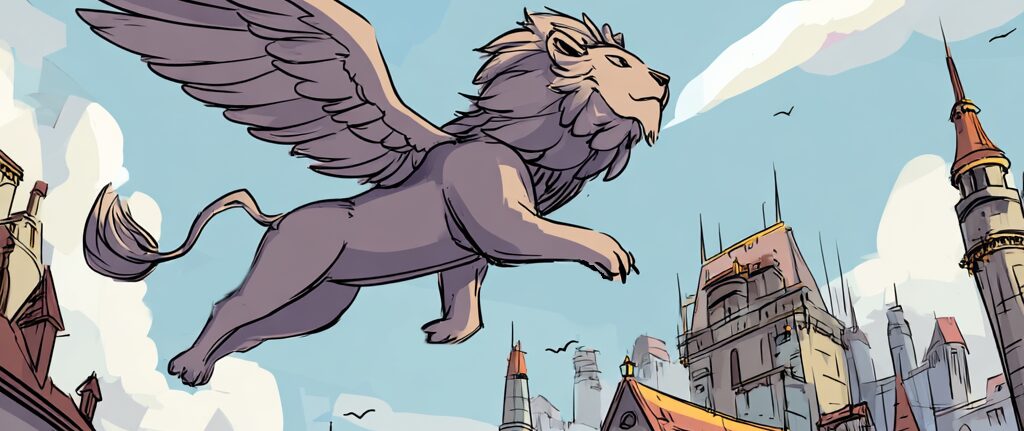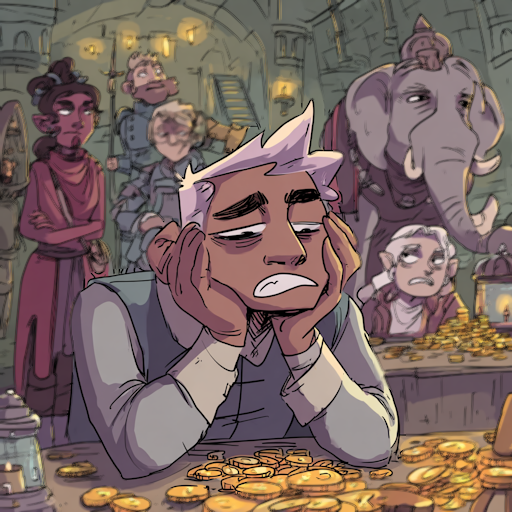The Economy of the Hydra
Making money from many-headed mayhem. Discover how D&D hydras create economics beyond simple monster encounters, from insurance fraud to magical item crafting.
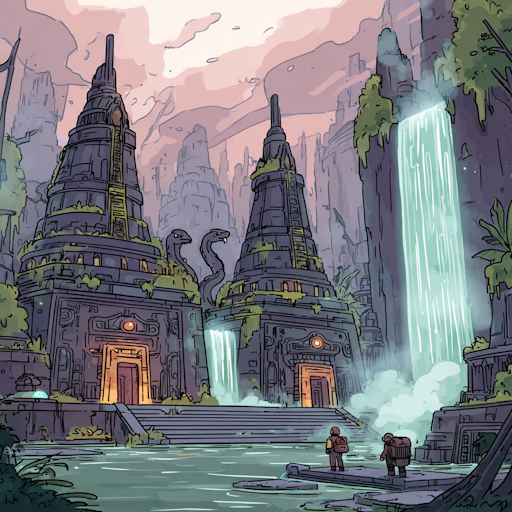
“Investigators incoming at the docks, Guildmaster.” The young clerk’s voice cracked as he delivered his urgent message to the assembled emergency session. “They’re asking about the Prosperity’s Dream—and they don’t look like they believe our report.”
Guildmaster Thorne set down her quill with the careful precision of someone whose world was about to collapse. “Steadfast sent their own people? Already?”
“Arrived on the morning tide,” the clerk confirmed. “Three of them, plus what looks like independent contractors. Armed ones.” He swallowed hard. “They’ve got diving equipment and a mage casting detection spells. This isn’t a routine assessment.”
The emergency council exchanged worried glances. The Prosperity’s Dream had been their salvation—a carefully orchestrated conspiracy that would keep their struggling shipping company afloat through the winter. The hydra-destroyed cargo vessel represented their only chance to pay creditors, maintain their fleet, and avoid bankruptcy.
But as any merchant operating in hydra territory knows, the real monsters aren’t always the ones with multiple heads and regenerating appetites. Sometimes the most dangerous predators are the ones holding the money.
Hydras – Not Just for Boss Fights
Most Dungeon Masters think of hydras as straightforward combat encounters—tough monsters with interesting regeneration mechanics that challenge parties to think tactically about fire damage and action economy. A truly memorable monster doesn’t just threaten hit points; defeating it could reshape a region. A single hydra controlling a river crossing doesn’t just threaten individual vessels. It forces an entire trade network to reorganize. A community could discover that hydras, while not intelligent enough for complex negotiations, could be conditioned to tolerate regular tribute payments in exchange for predictable territorial behavior.
The Geography of Economic Chokepoints
SIDEBAR: Real-World Economic Chokepoints
Whoever controls key geographic passages controls regional wealth. Real-world examples show how D&D’s hydra economics could mirror actual historical patterns:
The Suez Canal: A 120-mile waterway handles 12% of global trade. A single obstacle in the right location, like a hydra in a crucial river crossing, could paralyze international economics.
The Strait of Hormuz: A 21-mile wide passage that controls 20% of global petroleum shipping, you may have heard about the straight in the news recently (it’s called the world’s most important oil chokepoint, and Iran’s ability to threaten closure of this straight has historically given them outsized geopolitical influence).
Medieval European River Tolls: Castle Pfalzgrafenstein was never meant for residence—it was built on an island in the Rhine for sole purpose of collecting tolls. The castle’s location made merchants pay for protection whether they wanted it or not.
Guardians of Regeneration
Although Hercules used the legendary hydra’s blood to poison his weapons in later trials, the legendary regenerative abilities of hydras also make them particularly suited to protecting sites and treasures connected to magic.
The relationship between hydras and magical sites is likely more than coincidental. These creatures might gravitate toward locations where magic concentrates—ancient healing springs, or ancient ruins where powerful restoration rituals once took place. Whether drawn by the magical energy or placed there by more intelligent beings, hydras effectively serve as living security systems for locations that would otherwise be stripped bare by treasure hunters and alchemists.
SIDEBAR: The Hydra in Myth
From Ancient Greece to Your Table
The hydra’s economic disruption has deep roots in human storytelling. In Greek mythology, the Lernaean Hydra wasn’t just Hercules’ second labor. Sources describe the creature poisoning water sources and making roads impassable, effectively cutting off trade between city-states, or being a guardian to the underworld. The Hydra’s poisonous breath made the Lernaea region a “dead zone”, and Hercules’ victory could have opened trade routes long thought barred.
The magical essence that powers hydra regeneration could be captured, refined, and incorporated into some of the most sought-after magical items in existence. A ring of regeneration, one of the most prized possessions any adventurer could own, could require components that can only be harvested from an actively regenerating hydra. To make harvesting more interesting, it may have to happen during the brief moment when the creature is growing new heads.
Ring of Regeneration (Very Rare) sample recipe
Monster Source: Hydra (CR 8) and Adult or older dragon (CR 14-17)
Components:
- 1 Twelve Dragon Scales or a single Dragon Talon (primary magical focus)
- 2 Vials of Hydra Blood – Optional: harvested from a severed head, less than 1 day old
- Ring (5-150 gp)
- Jeweler’s Tools + Arcana proficiency
- Optional: Regeneration spell cast daily during crafting
Total Investment: 20,005 gp + 125 days
Well preserved hydra blood could be what powers regenerative items in your campaign, while poorly preserved blood could be used to power poisonous items (like in the herculean legend). Collection could require specialized containers lined with magical protections. Properly stored blood could also be used to enhance healing potions, improving their effectiveness (upgrading an existing potion one level to greater, superior, or supreme with a successful Alchemist’s Supplies check).
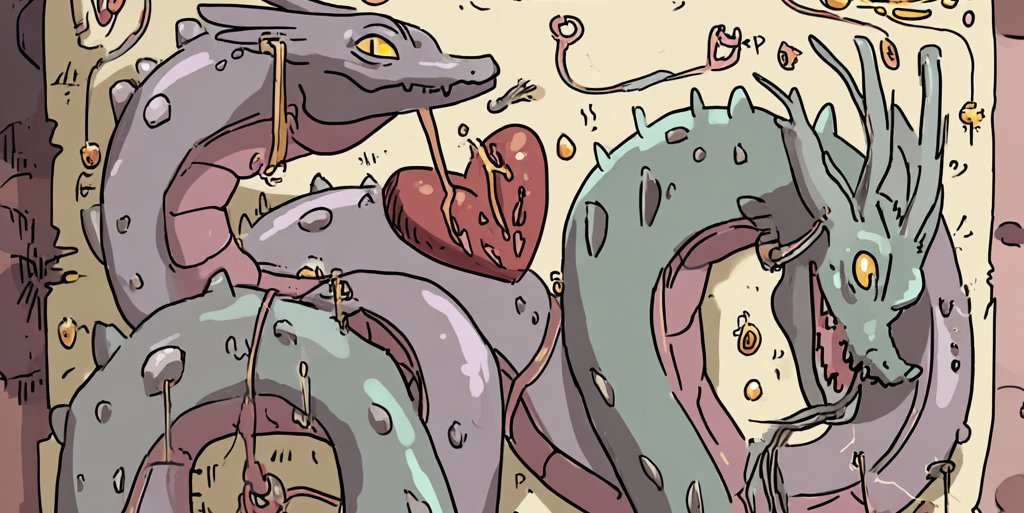
Interlude: Thorne’s Gambit
The hydra’s attack on the Prosperity’s Dream had been real and devastating. But the cargo manifest floating in Thorne’s desk drawer told a very different story. In the end, the most dangerous predator in these waters might not be the eight-headed beast lurking in the depths—it might be the fear and greed that drove honest merchants to become criminals in the desperate pursuit of profits. Through her window, she could see the investigators’ magical lights penetrating the harbor’s murky depths, inexorably moving toward the truth that would either vindicate her company’s claims or expose the elaborate deception that had consumed them all.
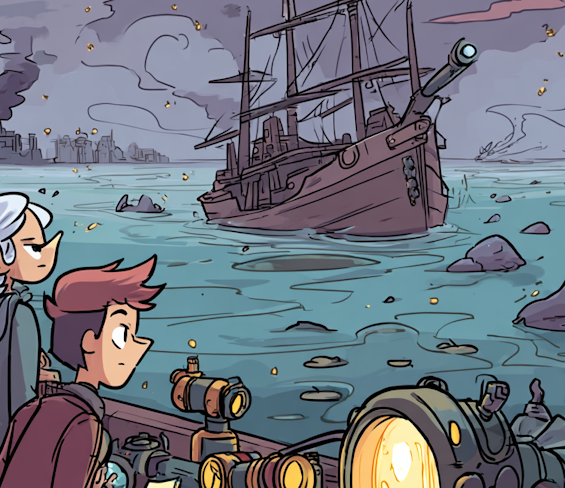
Guardian Economics: When Monsters Have Employers
While hydras demonstrate considerable territorial instincts, their true impact can come from their role as guardians. They excel as living security systems. Unlike human guards who can be bribed, distracted, or overwhelmed through superior numbers, hydras provide consistent, relentless protection that actually grows stronger when challenged. Their regenerative abilities mean that even successful attempts to bypass the guardian often result in a more dangerous obstacle for future intruders. Powerful wizards, religious orders, or gods themselves could leverage hydras to protect magical areas, ancient ruins, research facilities, rare natural spell components, or lairs.
Adventure Hooks and Ideas:
The complex economic ecosystem surrounding hydras provides good material for adventures that go far beyond a simple “kill the monster” scenario.
The Insurance Investigation
When the merchant vessel Prosperity’s Dream is destroyed in hydra-controlled waters, the 50,000 gold piece insurance claim initially appears straightforward. However, as investigators look into the substantial claim, irregularities emerge suggesting an elaborate fraud scheme.
What Makes This Adventure Special:
- For Social Players: Complex relationships and factions, and negotiating competing interests
- For Combat Enthusiasts: Underwater exploration and warehouse raids
- For Explorers: Crime scene investigation and detective work
The Hook: Characters serve as independent investigators hired to determine claim legitimacy, but quickly discover the fraud extends far beyond a single incident.
Potential Encounters:
- Initial Investigation – Gathering information while navigating suspicious NPCs and conflicting testimonies
- Wreck Site Diving – Underwater exploration with aquatic threats and evidence collection
- Warehouse Raid – Multi-level combat encounter with stealth and negotiation alternatives
- Final Confrontation – Climactic choice between exposing everything or protecting one faction or another
The Relic Recovery
Ancient texts describe the Temple of Eternal Renewal hidden within the Mistwood Swamp. A recent disaster creates demand for healing magic, prompting multiple factions to hire adventuring parties to locate the temple and recover its secrets.
What Makes This Adventure Special:
- For Social Players: Competing factions – Potentially negotiating with a (not so intelligent) hydra
- For Combat Enthusiasts: Swamp dangers and guardian trials
- For Explorers: Temple puzzles, ancient site investigation
The Hook: Multiple competing factions (academics, merchants, religious orders) race to claim the temple’s regenerative magic secrets and/or save the day.
Potential Encounters:
- Competing Expeditions – Face off in a frontier town
- Swamp Navigation – Environmental hazards, territorial creatures, and some sort of swamp guardian
- Temple Approach – Potential diplomacy with the hydra guardian, or a straight up fun fight
- Inner Sanctum – Progressive magical challenges and/or Indianna Jones style traps

Epilogue: The Real Monster
Guildmaster Thorne stood before the assembled harbor authority, the investigated cargo manifest spread across the polished oak table like evidence of her crimes. The investigators had been thorough—magical divination, underwater delving, financial forensics. Every detail of the fraud lay exposed under the harsh light of truth.
“The evidence is clear,” announced Investigator Blackwood, his voice carrying the weight of legal certainty. “The Prosperity’s Dream was deliberately stripped of its valuable cargo before entering hydra territory. The attack was real, but the claimed losses were fabricated.”
Thorne nodded slowly, accepting her fate. Bankruptcy. Criminal charges. The collapse of her company and the livelihoods of everyone who depended on it. But as she prepared to confess, Harbor Master Krennan cleared his throat with an odd expression.
“Actually,” Krennan said, producing a weathered ledger from beneath his papers, “there’s something the investigators missed.”
The room fell silent as Krennan opened the ledger to reveal decades of carefully documented entries. “This records every hydra attack in our waters for the past five years. And according to these records, our hydra has been displaying increasingly unusual… behavior…”
Investigator Blackwood frowned. “What kind of behavior?”
“Selective targeting,” Krennan replied. “For the past eighteen months, the creature has been attacking vessels carrying specific types of cargo while ignoring others. Ships carrying grain, medical supplies, and essential goods pass safely. Luxury vessels, arms shipments, and cargo from certain… politically problematic sources get destroyed.”
Thorne’s eyes widened as understanding dawned. “You’re saying the hydra is…”
“Enforcing trade sanctions,” Krennan confirmed. “Someone has been training our hydra to serve as customs enforcement. The question isn’t whether your insurance claim was fraud, Guildmaster. The question is whether you were a co-conspirator or just another victim of a very sophisticated operation.”
As the implications sank in, Investigator Blackwood reached for his sending stone with trembling hands. If a foreign power had weaponized a hydra, then fraud would be the least of their problems. If it had learned to tell the difference between authorized cargo and contraband…. then someone, somewhere, was using an eight-headed monster as the most effective customs agent in maritime history.
“Gentlemen,” Thorne said quietly, her voice carrying a mixture of relief and fear, “I believe you’re going to need a much larger investigation.”
